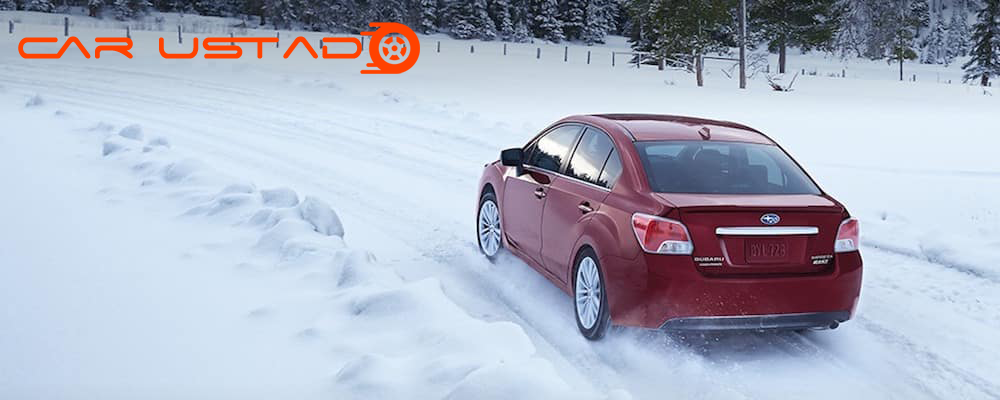Prepare Your Car for Winter

If you are planning to travel to somewhere cold this winter season, you may need to prepare your car for the winter. Car accidents are the number one cause of death during winters. Many of these deaths can be prevented if your car is appropriately maintained for the winter season and is fully functional.
So, without further ado, let’s take a look at some things you should consider before taking your car out in the cold.
• Check Your Battery
Very cold temperatures can affect the performance of your car’s battery. The battery capacity to power your car decreases significantly as temperatures drop. At 5, a battery’s amp-hour capacity goes down to half. Coupled with the fact that your car requires more current to start during the winter, this means that your battery needs to perform at peak power.
If you are uncertain of how much current your battery is generating, visit an auto repair service to get a battery load test. Depending on the condition of your battery, it may need to be replaced with a new one. If your battery is not old and in good condition, we can clean it up for the winter by removing any corrosions on the wires and posts to ensure you won’t have any problems starting your car.
• Check your Windshield and Change Your Wiper Blades
Winter season is often accompanied by sleet. Additionally, mud and salt from the road are continuously sprayed on your windshield. If your windshield has cracks, there is a high chance they will become larger due to the constant bombardment of the elements. So, it is better to have them fixed by an automotive repair and services company.
Your windshield will also become dirty which means reduced visibility and higher chances of an accident. If your wiper blades are worn out, they won’t help you clean your windshield effectively. Wiper blades are typically designed to work well for a year, after which they should be replaced to ensure your windshield remains clear.
Moreover, you should also use a washer fluid that is approved for subfreezing temperatures and won’t freeze on your windshield. Winter fluid is designed to dislodge frost and snow from your windshield.
• Check Your Antifreeze
Antifreeze is a substance that prevents your engine from freezing during severely low temperatures. Without it, your engine will not combust and leave you stranded on the road. Typically, the ratio of antifreeze and water in your radiator should be 1:1. This will prevent your radiator from freezing. You can also bring your car to our automotive repair service so that we can check it for you.
• Check Your Tire Pressure
Another important thing you need to check for the winter is to ensure that your tires are properly inflated. Tire pressure is measured by PSI, pounds per square inch.
In winter, checking your tire pressure is particularly important since the cold can reduce air pressure, making your tires deflate a bit. For every 10 degrees drop in temperature, your tire pressure can drop about one PSI. If you are not sure how much pressure should be in your tires, check your car’s instruction manual or bring it to our auto service so that we can find it for you and fill your tires with air.
• Check Your Tire Tread
When your tires are inflated fully, they meet the road properly. Since winter roads are wet and slick, you need tires that can provide you with the best traction. Hence, it is important to check your tire pressure at least once a month.
Also, make sure that your tires have the right amount of tread in them. You can ensure this at home by performing the “Lincoln test” or the “penny test.” Insert a penny into your tire’s groove with Lincoln’s head pointing inwards. If you can’t see the top of Lincoln’s head, it means you still have usable tread. However, if you can see all of Lincoln’s head, it means your tire is worn down, and you need to replace it before winter starts.
• Get Snow Tires
If you drive in an area where it snows regularly, you may need to replace your all-season tires with snow tires. These tires are made of soft rubber and can retain their flexibility, even in freezing conditions. They also have a stronger tread pattern that can grip snow and ice.
When you are driving in temperatures below 40, it is best to have snow tires.
• Change to Winter-Grade Oil
Cold weather can freeze your oil, making it thicker and more difficult to circulate. If this happens, your car won’t start. Therefore, you should consider switching from your regular oil to lower viscosity grade oil, like a 5W-30.
To ensure your oil is thin enough for winter, bring your car around to us so that we can check it out.
• Make a Winter Supply Kit
One of the most important things you need when you are driving in extreme cold weather is an emergency supply kit. If your car meets an unexpected accident or is stranded, you will need an emergency kit, which includes things like a first-aid kit, blankets, water, food with long shelf life, ice scraper or shovels, and some warm clothing.
These things can make a huge difference when things go wrong.
All of these simple things can make it that much safer to drive your car in the cold season. If you are still not sure how to prepare your car for the cold, bring it to Car Ustad and we will help you make it winter-ready.
